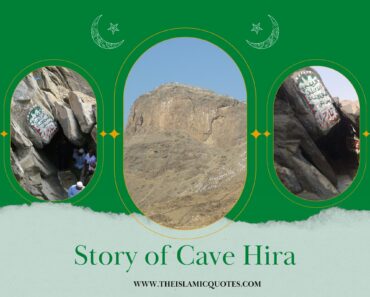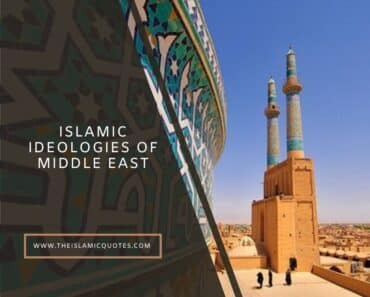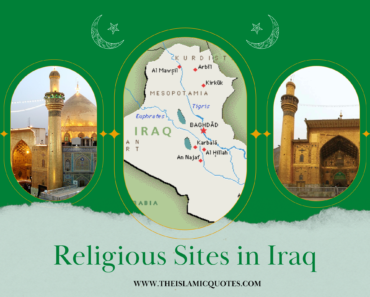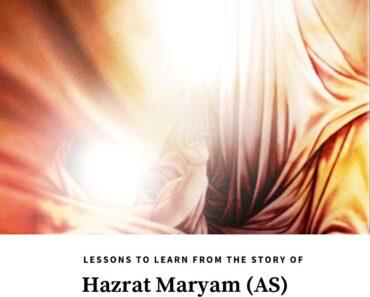Islamic places to visit in Iran: One of the most popular halal travel destinations, Iran is a strongly religious country with a variety of sacred sites. Tourist destinations in Iran range from remote shrines to rugged mountains. The Iranian people adhere to an honest and dedicated faith and religious beliefs, which demands honesty and devotion.
Although the Islamic Republic of Iran is the state’s official name, not all residents are Muslims. Christians, Zoroastrians, and Jews are a few examples of solid faith adherents. Iran has the second-largest Jewish population in the Middle East, right behind Israel.
Popular Religious Sites in Iran
Each place on this list is distinct and exceptional in some manner. As a result, they provide a clear picture of Iranian culture and its connection to Shia Islam and other religious branches of Zoroastrianism.
Foreigners don’t frequently visit some religious sites because they are off the beaten path for tourists. These locations are in Iran, yet many people are unaware of them. Further, some are still prohibited to non-Muslims.
In general, Iranians are happy to show you around these Shia holy places in Iran if you possess a genuine curiosity. You should be sincere, friendly, interested, and well-dressed. You will be able to enter.
Then let’s begin with a list of the most significant religious places in Iran.
01. Imam Raza Tomb
The Imam Reza Monument, is one of the Shia holy places in Iran and the resting place of the seventh Shi’ite Imam, is part of the enormous religious place known as the Imam Reza Shrine. It is the second-largest mosque in terms of capacity and size worldwide.
A Sunni Muslim Caliph named Mamun the Abbasid established this shrine in 818 AD. Mamun so admired Imam Raza that he chose Imam to succeed him and married him to his daughter. When the Caliph revealed his decision, there were numerous deadly outbreaks between competing Shia and Sunnis. The two leaders marched to Baghdad together to silence their political rivals.
Imam became sick while traveling and passed away quickly. Shia adherents believed Sunnis poisoned Reza and so the Caliph erected this majestic monument. As a result, Imam Reza’s tomb became a pious and reverent place of devotion in Iran since it was stated that visiting there was equivalent to making 70,000 pilgrimages to Mecca.
Location: Mashhad
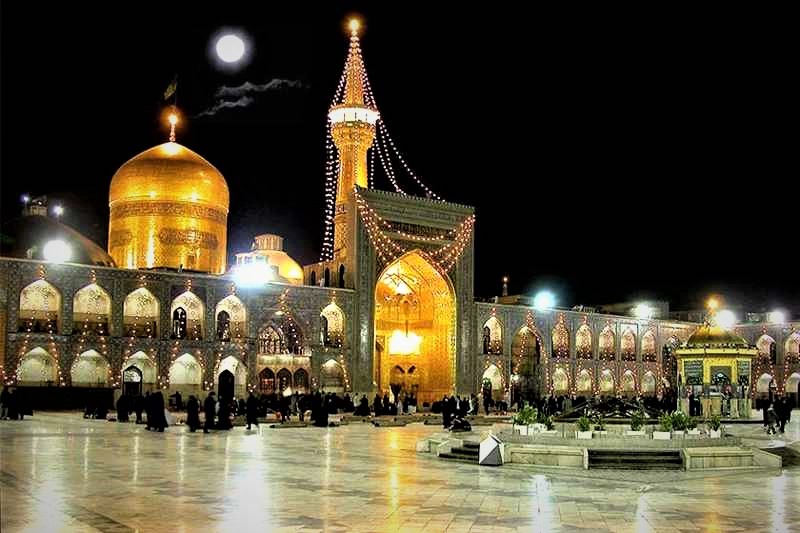
02. Fatima Masumeh Shrine
Among Shia Muslims, Qom is second only to Mashhad in importance among Iranian cities for the Fatima Masumeh Shrine. Shah Abbas 1 constructed a sizable portion of this religious wonder, the Fatima Masumeh Shrine, at the start of the 17th century.
The purpose of this shrine is to honor Fatima al-Masumeh, also known as The Infallible One, who is the sister of Imam Reza, the eighth Shi’ite Imam.
Fatima fell quite unwell in 816 AD while en route to Mashhad to meet her brother. She made it to the town of Qom, where she ultimately died. The original shrine was constructed to entice his subjects to make pilgrimages only to locations inside the boundaries of his realm.
Location: Qom
Fatima Masumeh Shrine Mysteries
- The 7th Imam, Musa al-Kadhim, had a daughter named Fatima Masumeh.
- The 8th Imam Reza’s sister was Fatima Masumeh.
- A bamboo canopy was used to shade Fatima Masumeh’s grave.
- In the year 823 CE, Fatima Masumeh passed away in Qom.
- The mosque is 38,000 square meters in size.
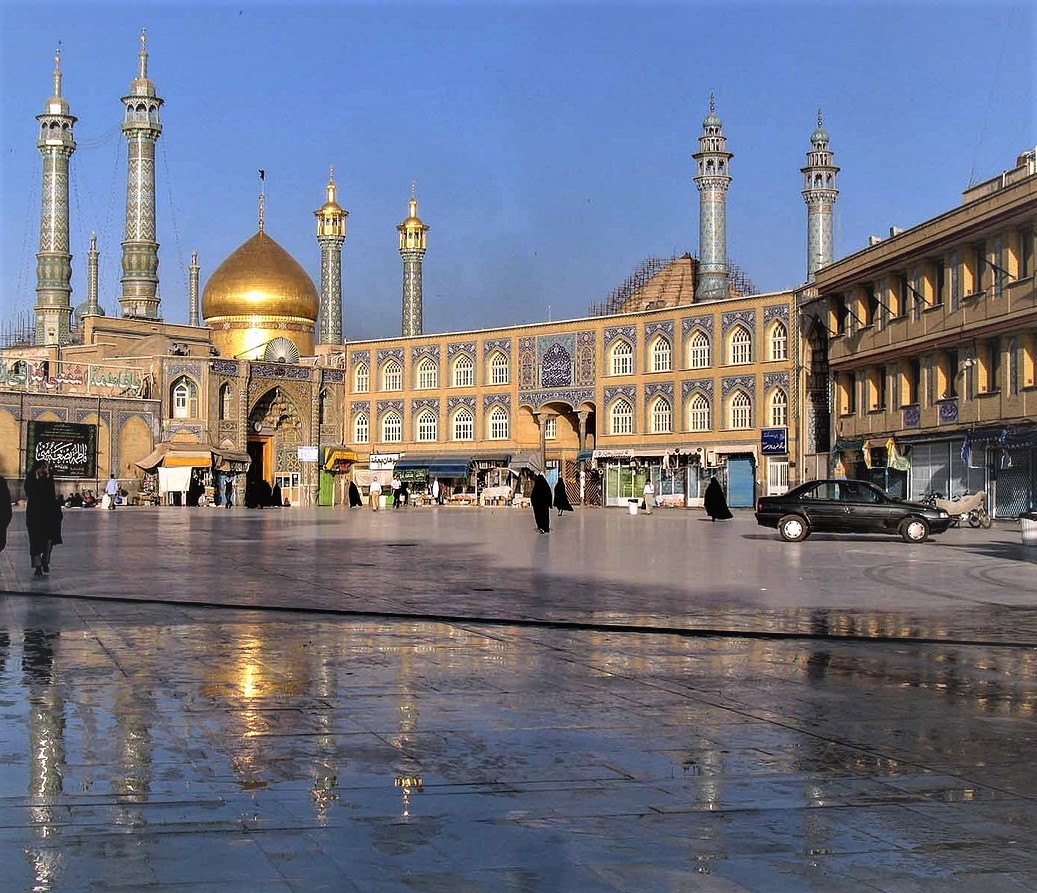
03. The Zoroastrian Dakhmeh
Undoubtedly, it is one of the unique places in Iran and ranks among Yazd’s most spooky tourist attractions! The location is more fascinating than terrifying. Zoroastrians used to bury their dead in the Zoroastrian Dakhmeh, also known as the Towers of Silence.
According to Zoroastrian doctrine, human remains are impure. They also regard soil as a holy element; hence, no individual may be buried lest the soil becomes contaminated. Therefore, they placed the corpse near predators and birds rather than burying it.
You now understand the purpose behind the tall towers of quiet. It is important to note that mourning for the deceased is greatly frowned upon in the Zoroastrian religion. The dates for this strange event go back more than 3000 years. It is important to note that since the 1970s, no ceremonies have taken place in Dakhmeh.
Location: Yazd
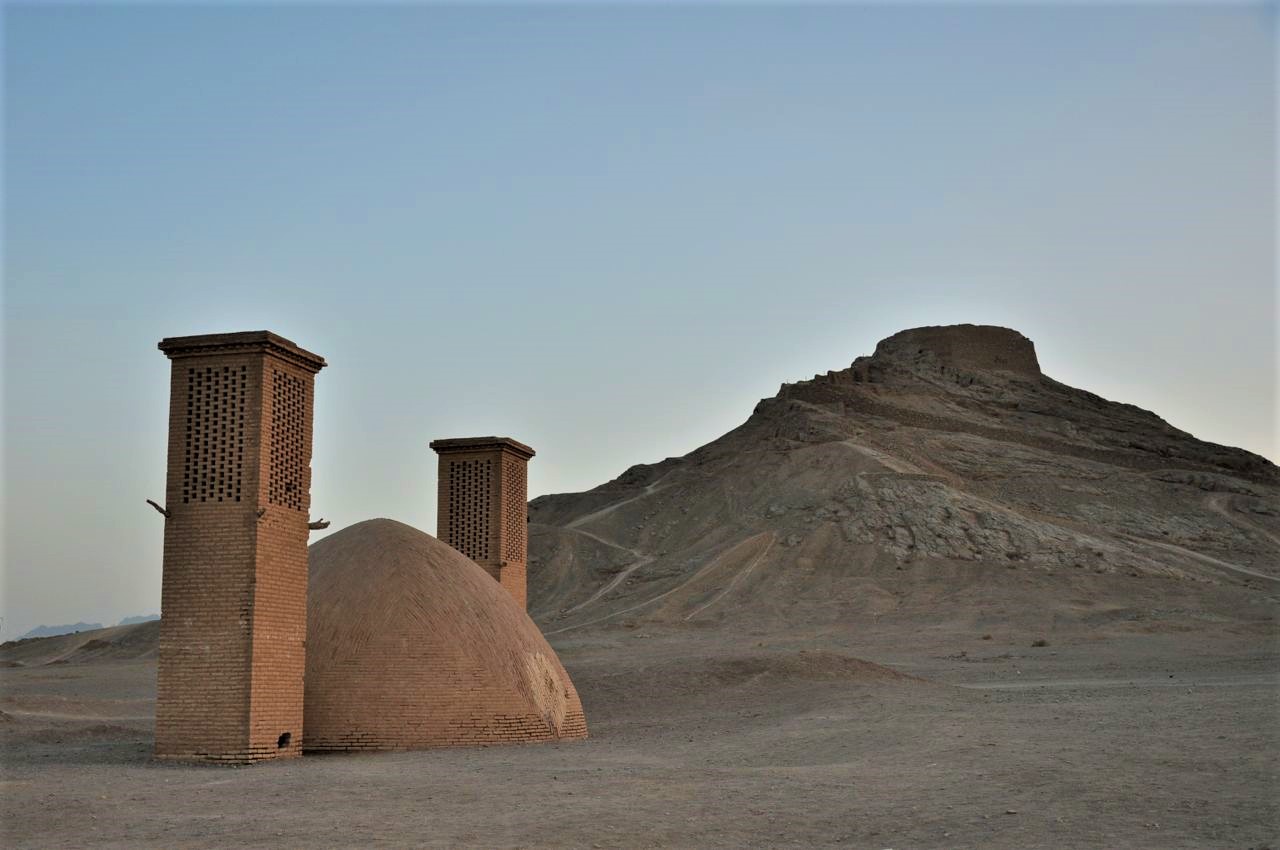
04. Jamkaran Mosque
The Jamkaran Mosque is situated in Jamkaran Village, only six kilometers from Qom, Iran’s second religious center. Shias consider Sheikh Hassan Ebn Mesleh Jamkarani to have some connection to the building of the Jamkaran Mosque. Young people, in particular, have recently developed a strong reputation for the mosque.
It is reported that this person met with Imam Zaman, the 12th Shi’ite Imam, in which the Imam gave him instructions for constructing the mosque. Since its erection, the Jamkaran Mosque has undergone numerous repairs and renovations.
Here are some more of the world’s most beautiful mosques that you must visit.
Location: Jamkaran Village near Qom
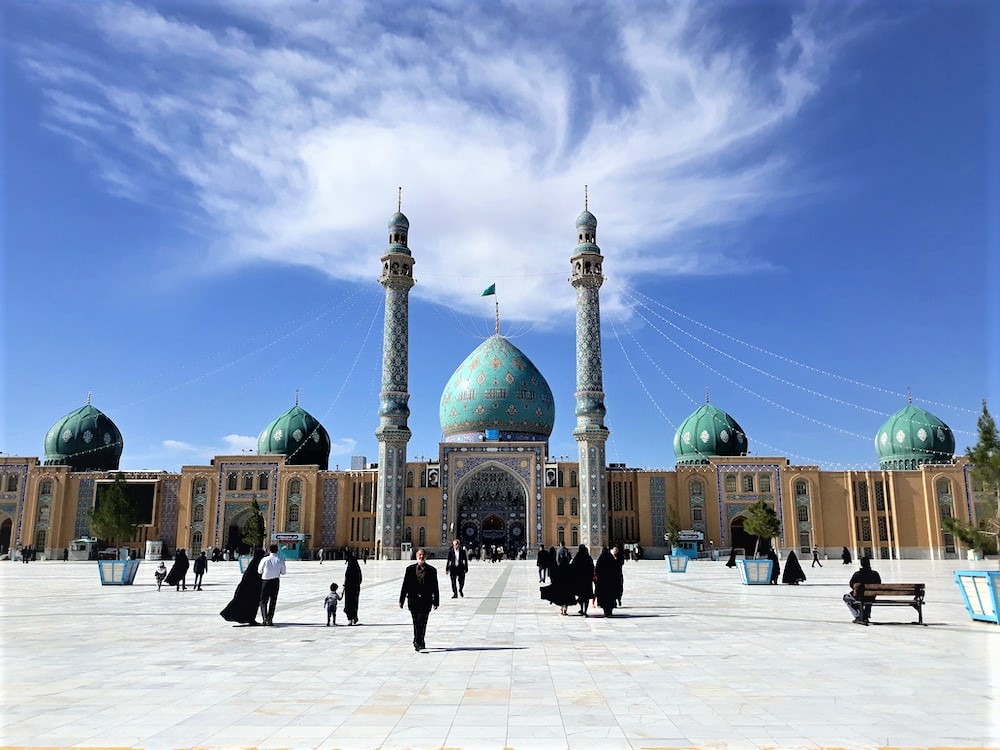
05. Nasir-Al-Mulk Mosque
One of Shiraz’s oldest mosques, Nasir-al Mulk Mosque is unquestionably one of the most stunning Iran’s Islamic places. The Nasir-al Mulk Mosque, popularly known as the Pink Mosque, initially appears to be a typical Islamic mosque.
Still, the architectural design transforms the mosque into a massive kaleidoscope when the sun rises. The walls and carpets are painted with hundreds of different hues by the sun as it filters through mosaic windows.
In 1876, Mirza Hassan Ali Khan, the provincial ruler of Fars, decided to leave a mosque as a legacy for future generations. As a result, he built the mosque, which was completed in 1925 after 12 years of work.
This mosque once housed a dwelling, a bath, storage, and a mosque. When Lotf Ali Khan Zand Street was being constructed, a significant portion, including the indoor area, entry to the house, bath, and water storage, were destroyed.
Location: Shiraz
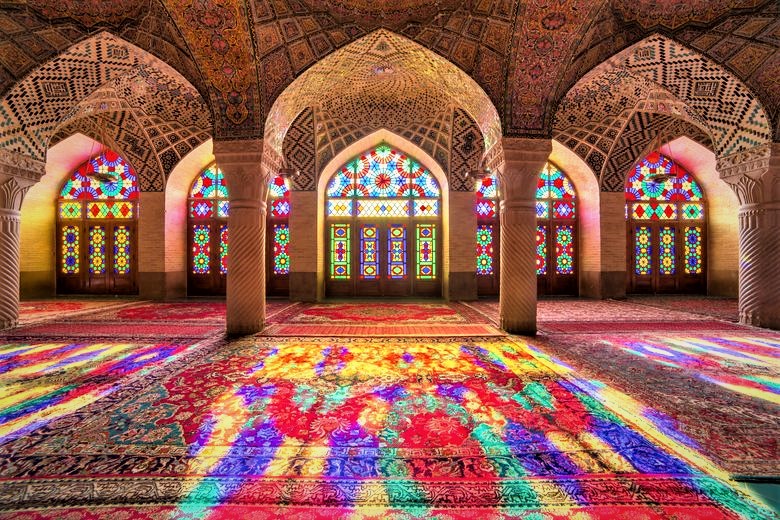
06. Shah Cheragh Shrine
Shah Cheragh is one of the spots with a significant draw for visitors regarding tourist attractions in Shiraz-Fars. A range of visitors can benefit from the shrine’s internal splendor and external architectural style. In the royal palace, beneath the dome, the shrine is situated on the west side of the courtyard. Miniature, colorful mirrors artistically reflect the decor.
Around the mirrors and tiles, there are numerous lovely Persian and Arabic lines. Two principal entrances are present. A vast fountain pond with stately trees surrounding it is in the center of this courtyard. There are two more side doors in addition to the two main ones, one leading to the Haji Bazaar and the other to the Atiq Grand Mosque.
A gate-like entry leads into the Shah Cheragh Bazaar from the north side of the courtyard. These three areas are all popular tourist destinations in Shiraz, making access for tourists straightforward.
Location: Shiraz
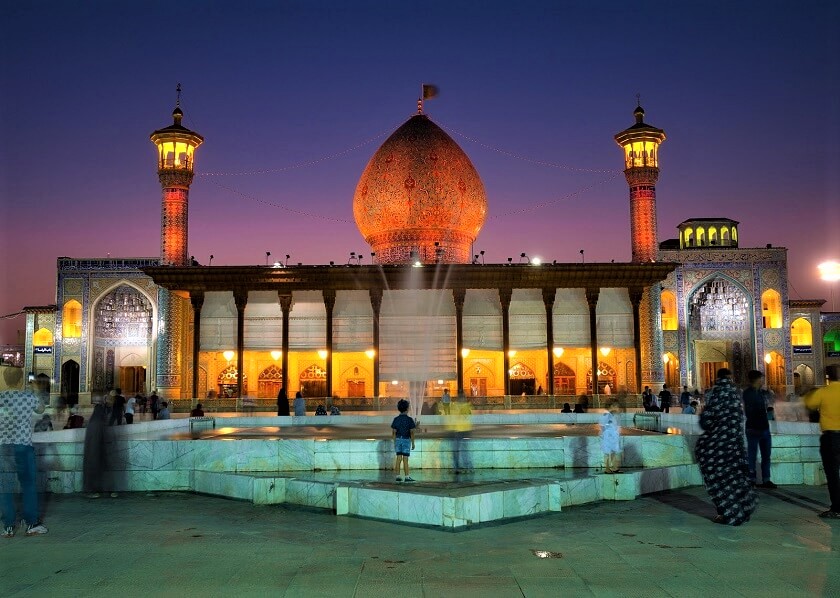
07. Shah Mosque
Here is a fantastic illustration of Islamic and beautiful places in Iran. It was built about 400 years ago, when Shah Abbas II, the ruler of that time, decided to build important buildings in Isfahan. He wanted to make the city the proper capital of Iran. When you enter a mosque, you can see two sides and a single dome, ideally in the center.
Before it, those were seminaries (religious schools). This mosque is beyond description with its turquoise blue tiles and ethereal architecture. Under the dome, where the dome amplifies the voice, there is always someone singing Islamic music. The calligraphy and architectural philosophy of this mosque are fundamental.
Location: Isfahan
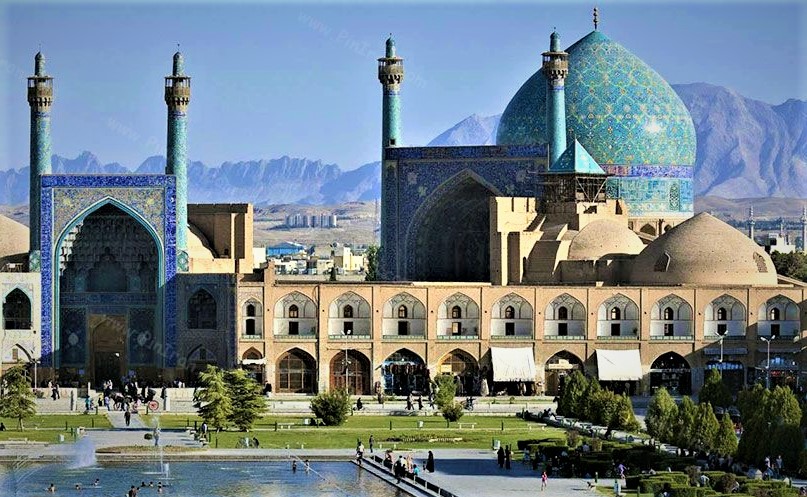
08. Jama e Mosque
Yazd’s Jame Mosques are a real gem in the middle of the city. This mosque has beautiful blue tile throughout, which creates a serene environment.
You can choose any avenue in the city’s historic district and complete your walking trip at the Jame Mosque. The finest part about Yazd’s landmark district is getting lost and attempting to navigate your way out.
You can meet people and learn about their unique way of life here as you wander the streets. You won’t get lost, so don’t worry. The Jame mosque’s entryway will eventually come into view.
Location: Yazd
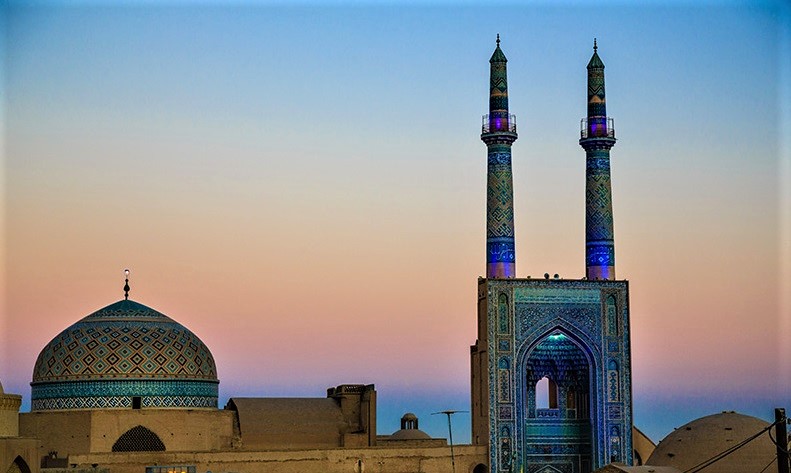
09. Zaid Mosque
The tomb of Zaid is located inside this stunning Iranian mosque. Islam prohibits non-Muslims from entering the tomb area. Luxuriously embellished with gold and glass, its spectacular interior is stunning.
The Grand Bazaar in Tehran is home to several mosques, including the Zaid Mosque. A courtyard inside the market catches the sun’s rays as they reflect off the tiles.
Since this is the mosque where the shopkeepers frequently go to worship, the beautifully colorful decor, both inside and out, is stunningly well-maintained.
Location: Tehran Bazar
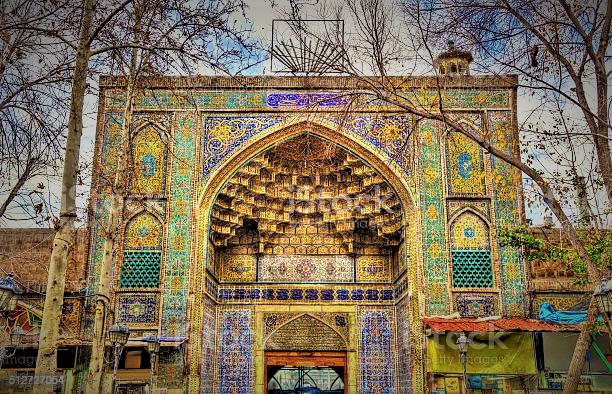
10. Sheikh Lotfullah Mosque
In the early 17th century, the Sheikh Lotfollah Mosque stood tall and was a magnificent example of Iranian architecture. Despite having a very straightforward design, the building is worth a visit because of the tile work.
Minarets and the off-center dome are the most prominent features of the Sheikh Lotfollah Mosque. The cream-colored tiles occasionally have a pinkish tint because the sun changes its color during the day.
With its dome’s arabesque patterns that get thinner as they get closer to the center, this building is completely covered with brightly colored tiles on both the inside and outside.
Location: Isfahan
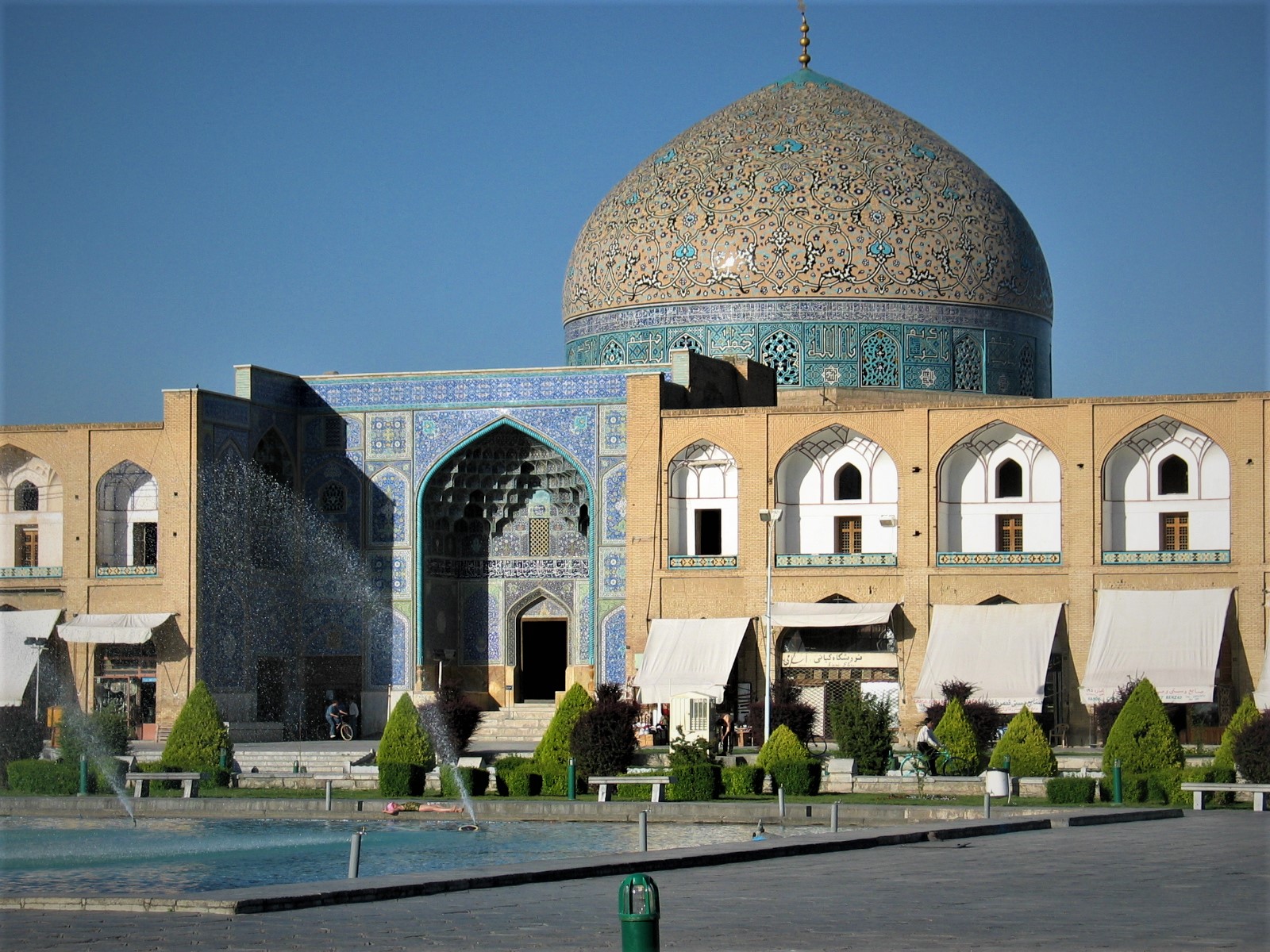
Wrapping Up!
There are several reasons why Iran is such a popular destination for Islamic tourists. The country is home to several important historical and Shia holy places in Iran, and its people are known for hospitality. This list provides a great starting point for anyone interested in exploring Iran’s Islamic heritage. What are your thoughts? Have you been to any of these places?
Frequently Asked Questions
Q. What is the most popular destination in Iran?
Isfahan is a famous old town in Iran and one of the country’s most visited tourist locations. Due to Isfahan’s 5,000 ancient ruins and locations that date back thousands of years, this charming city is sometimes referred to as the “Half of the World.”
Q. Which religion is the most popular in Iran?
The two leading schools of Islam are Sunni and Shia, with Shia making up the vast majority of Iranians. The official religion of Iran, Shiism, is practiced by almost 90% of Iranians.
Q. Which Iranian city is the most stunning?
Most tourists will cite Shiraz as Iran’s most picturesque city when asked. Shiraz is a city in the Fars region of Iran and is a stop along the “traditional way” to travel around the country.


